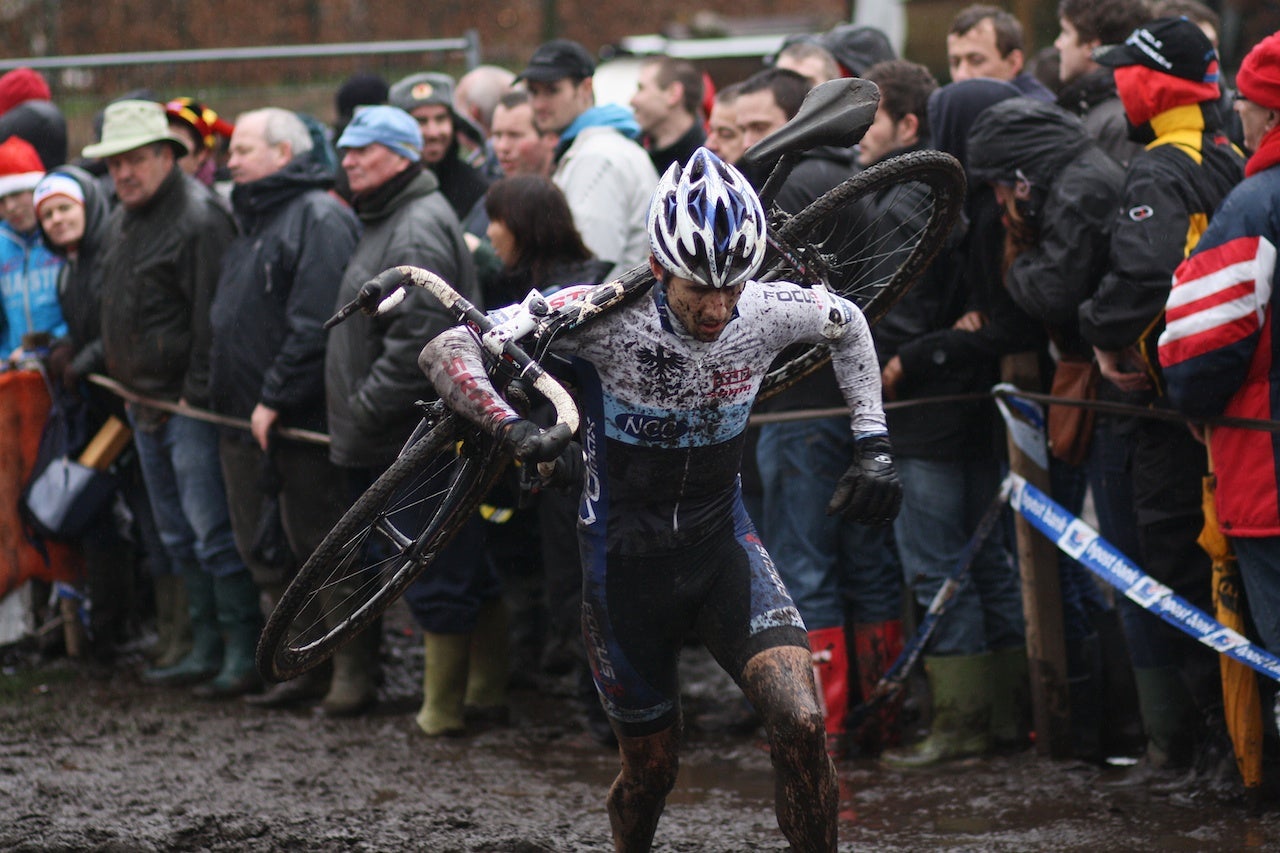4 Off-Season Sports You Should Try Right Now

Photo: Dan Seaton | Velonews.com
After the race season is over, some triathletes are fearful of doing other sports. They continue full-steam ahead, not giving up the summer’s sport routine and intensity. The fear of losing fitness in their primary sport, injury and not knowing how to fit other sports into a training plan keeps athletes from fun—and in some cases even performance improvements in their primary sport.
Let’s take a look at four sports you should consider doing in the off-season, how those sports might help you be a better racer next season and how to fit them (and others) into your training plan.
Rock climbing
According to the NPD Group, which measures retail trends, the climbing industry grew by 13 percent from January 2016 to January 2017. Industry sales have grown by $59.2 million since 2014, reaching a four-year high of $175.5 million. This means there is a better chance than ever that a climbing gym is located near you.
Why do it?
Climbing is mostly a strength, flexibility, coordination and problem-solving sport. All of these benefits are useful for endurance athletes. Additionally, climbing strengthens muscles that are not in the primary plane of travel for triathletes and cyclists.
During rock climbing, you are moving laterally, up and down in the vertical plane. The legs of cyclists and triathletes move in a forward, limited direction. For triathletes, the motion of pulling yourself up the wall is an outstanding compliment to the swimming motion. Your lower body stands to gain hip strength and flexibility moving side to side, up and down.
How to fit it in your training plan
A great option is to substitute climbing for one or two of your weekly strength training sessions. Many gyms offer rental equipment to make it easy to try the sport.
Cyclocross
According to the website Cyclova, it is believed that cyclocross originated in the autumn, in the French countryside. Racers riding from one town to another would take shortcuts through farmer’s fields, jumping over fences with an eye on the church steeple marking the next town. During this time, the sport was called “steeple chasing.”
Why do it?
Long accepted as a way for road racers to stay fit in the off-season, cyclocross isn’t much of a cross training stretch for road racers. More recently, mountain bikers and triathletes can be found toeing the start line at a “cross” race.
The sport offers the challenge of riding a bike in mud, sand and grass. Combine that with obstacles and steep uphill sections that require bike carrying, this multi-lap sport is fun for racers and spectators alike.
Most races are some 30 to 60 minutes long, with the leg-searing intensity many racers savor. Fun, variety, challenge and bad weather conditions draw endurance junkies who don’t want to give up intensity in the off-season.
How to fit it in your training plan
When participating in cross, it is best to leave any heavy weight training until after the season is over. Cut down the long rides that you’ve been doing all season and include these short, fast races instead.
Alpine skiing
Athletes who live close to the mountains can take advantage of ski area passes to make this sport more affordable. For those that travel for a week-long ski vacation (or two) each season, this sport can be done with family members.
Why do it?
Skiing is a great way to enjoy winter with family members. Playing in the snow is a complete diversion from summer sports. Selecting the best path down the mountain is similar to selecting the best line on the mountain bike or the optimal way through the peloton.
Skiing builds strength, balance, coordination and works on muscles that support lateral movements. Strengthening these supporting muscles can help your primary sport.
How to fit it in your training plan
If you take a week-long ski vacation and you plan to ski some four to six hours each day, don’t worry about trying to squeeze in swimming, cycling and running. Take a break from your primary sport and enjoy skiing. If you live close to the mountains and plan to ski often, replace your long run or ride with a ski day.
Basketball
This team sport includes powerful bursts of speed, hand-eye coordination, endurance, and teamwork.
Why do it?
Bad weather and darkness won’t affect your basketball game if you’re playing indoors. Explosive intervals on the basketball court are more fun than doing power-building plyometrics on your own and, similar to cyclocross, there is plenty of intensity to keep your endorphins fired up.
How to fit it in your training plan
Playing basketball once or twice per week can be done in the place of strength training sessions. Because of the intensity of basketball, count it as one of your two and no more than four intensity days each week.
Other considerations
There are many other sports that you can include in your off-season training. In all cases, be sure to begin slowly because fitness in your primary sport does not always easily transfer over to another sport.
A prime example is cyclists who take up running. Just because you can ride a bike for two hours, does not mean you can run for two hours within a week of ending your cycling season.
Look for these features in your off-season sport:
- Fun
- Family or team-oriented
- Less weekly intensity than during the race season
- Body movements that build strength in directions different that the primary sport
- Balance
- Coordination
- Explosive moves for power and bone strength
Take this time to enjoy your off-season by trying out a new sport, or focusing on one of the above examples. You’ll build a new skillset, improve your strength and you’ll be refreshed when it’s time to start ramping up again in the spring.
This article originally appeared at Trainingpeaks.com.